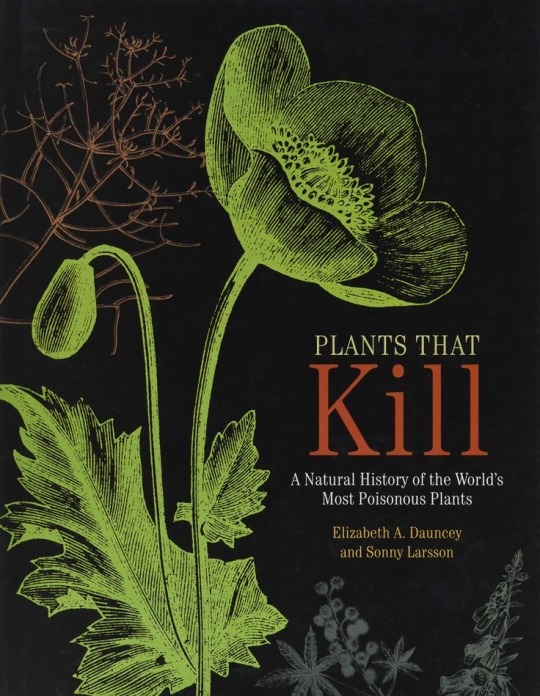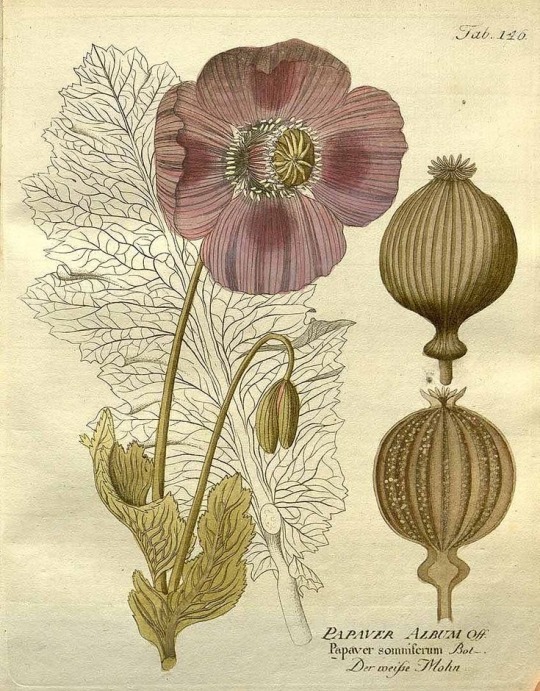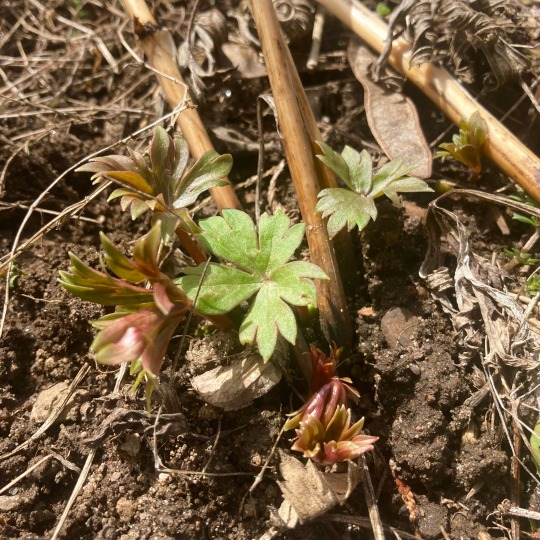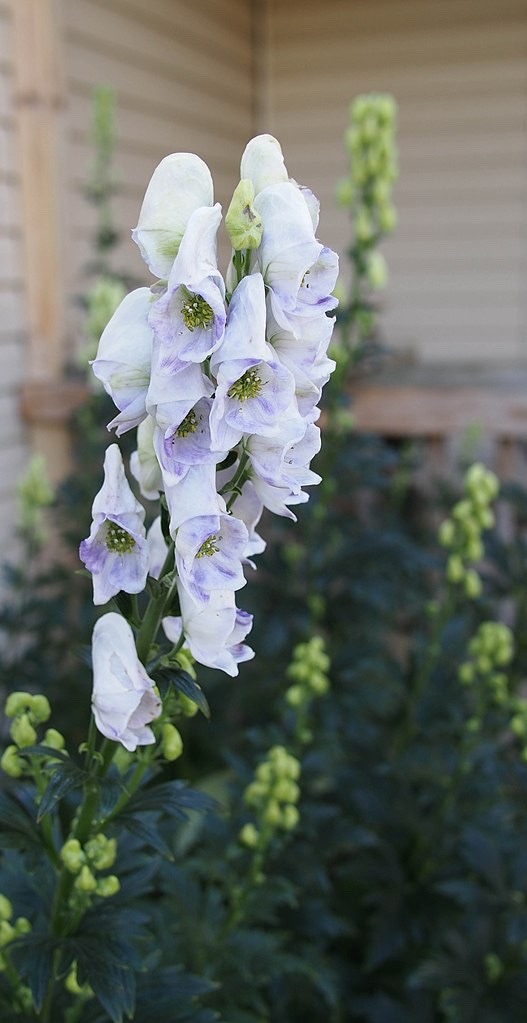Text

Study of Mandragora officinarum leaf, flower, and fruit from the scientific journal “Novi commentarii Academiae Scientiarum Imperialis Petropolitanae”, 1836.
19 notes
·
View notes
Text




In love with these whimsical folkloric illustrations of poisonous plants from the Arzneipflanzenbuch (Medicinal Plant Book), published in Augsburg, Germany circa 1520-1530. The dragon-shaped root of the belladonna illustration brings me joy! The whole book has been digitized and can be viewed online via the Bavarian State Library website.
Top left: belladonna
Top right: henbane
Bottom left: opium poppy
Bottom right: mandrake root
#bane folk#poisonous plants#botanical illustration#atropa belladonna#toxic plants#henbane#deadly nightshade#mandrake#mandrake root#opium poppy#antiquarian books#antique books
81 notes
·
View notes
Text

Datura metel ‘fastuosa’ (aka datura ‘ballerina purple’) by Dutch botanical artist Jan Moninckx, 1682.
45 notes
·
View notes
Text

Print of Atropa belladonna (made with a copper engraving) featured in the first volume of Medical Botany by William Woodville and James Phillips, 1790.
Photo courtesy of the Missouri Botanical Garden Library.
#bane folk#poisonous plants#toxic plants#atropa belladonna#deadly nightshade#botanical illustration#antique books#rare books#antiquarian books
14 notes
·
View notes
Text

Foxgloves are blooming in the poison garden! In western folklore the poisonous foxglove is one of the herbs traditionally harvested at midsummer as a charm of protection against evil, illness, and harm.
A simple way to do this would be to make a flower bouquet for your home around midsummer —it will look beautiful while protecting you and your home from all ills. When the flowers start to fade, you can dry them and use them in protection sachets hidden in your house, vehicle, or purse. Then replace them next year and start again!
#bane folk#poisonous plants#toxic plants#poison garden#digitalis purpurea#digitalis#foxgloves#foxglove#baneful plants#toxic botanicals#plant folklore#folk magic
38 notes
·
View notes
Text

Today in the poison garden:
Japanese water iris (iris ensata)
This tiny iris with big showy blooms is native to Japan, China, Korea, and Russia where it has been valued as an ornamental flower for the past 500 years, possibly much longer. Today many varieties are available. Iris ensata is a perennial that likes full sun and moist, boggy, slightly acidic soil. It’s a good plant for pond edges or soggy parts of your yard. Hardy in USDA zones 4-9.
Caution: Irises contain multiple toxins that can cause skin irritation if the plant juices touch skin or mucus membranes and cause abdominal pain, vomiting, and diarrhea if ingested. The rhizomes contain the highest concentration of toxins. Iris poisoning is not deadly to humans, just very unpleasant, but they can cause serious illness or death to pets and livestock if ingested.
#bane folk#poisonous plants#toxic plants#poison garden#iris ensata#japanese iris#japanese water iris
18 notes
·
View notes
Text


A two year old belladonna plant in my poison garden along with a dozen baby belladonnas starts I just planted this weekend.
May the fireflies eat the slugs, snails, potato beetles, and crowned slug caterpillars who try to eat my beautiful babies!
#bane folk#poisonous plants#toxic plants#poison garden#atropa belladonna#baneful plants#baneful herbs
20 notes
·
View notes
Text

My opium poppies have popped up in the poison garden! I planted two different varieties of papaver somniferum last fall and am excited for the beautiful blooms this summer.
9 notes
·
View notes
Text

Elderberry leaves, branches, unripe berries, and seeds are mildly toxic due to lectins and cyanogenic glycosides which can result in nausea, vomiting, and diarrhea if ingested. The flowers are edible fresh, cooked or dried and are used to make syrup, liqueur, wine, tea, fritters, and baked goods. The berries are safe to ingest after cooking and are famously used in teas, syrups, and tinctures to help relieve cold and flu symptoms.
Pictured: red elderberry (sambucus racemosa)
Note: don’t use red elderberries, they taste like compost juice.
25 notes
·
View notes
Text

Baby belladonna 💜
18 notes
·
View notes
Text

Plants That Kill by Elizabeth A. Dauncey and Sonny Larsson, 2018
Not a witchy book or a gardening book, but a very good botanical reference book covering the history and folklore of poisonous plants. It’s a big beautiful coffee table style book with full-colour photos and art.
#bane folk#poisonous plants#toxic plants#ethnobotany#botany#toxicology#recommended reading#book recommendations
111 notes
·
View notes
Text


This tea cup with foxgloves and poison hemlock I found second hand 😭🤌
Yes it most definitely came home with me!
159 notes
·
View notes
Text

Opium Poppy (papaver somniferum) by F.B. Vietz, 1804.
#bane folk#poisonous plants#toxic plants#opium poppy#breadseed poppy#papaver somniferum#botanical art#botanical illustration
76 notes
·
View notes
Text

My Chinese wolfsbane (aconitum carmichaelii) are just starting to sprout in the poison garden.
#bane folk#aconite#wolfsbane#monkshood#aconitum carmichaelii#poisonous plants#toxic plants#poison garden
13 notes
·
View notes
Text

Pardon me while I obsess over Cloudy Monkshood…
Photo: F.D. Richards, Wikimedia Commons
57 notes
·
View notes
Text

Mandragora officinarum coloured botanical engraving, 1836.
Source: Novi Commentarii Academiae Scientiarum Instituti Bononiensis, scientific journal (1834–1849).
#bane folk#mandrake#mandragora#mandragora officinarum#poisonous plants#toxic plants#toxic botanicals#botanical illustration#botanical art
56 notes
·
View notes
